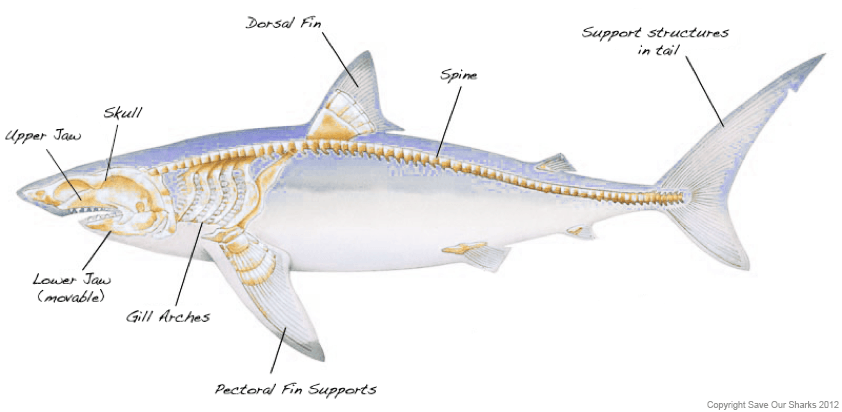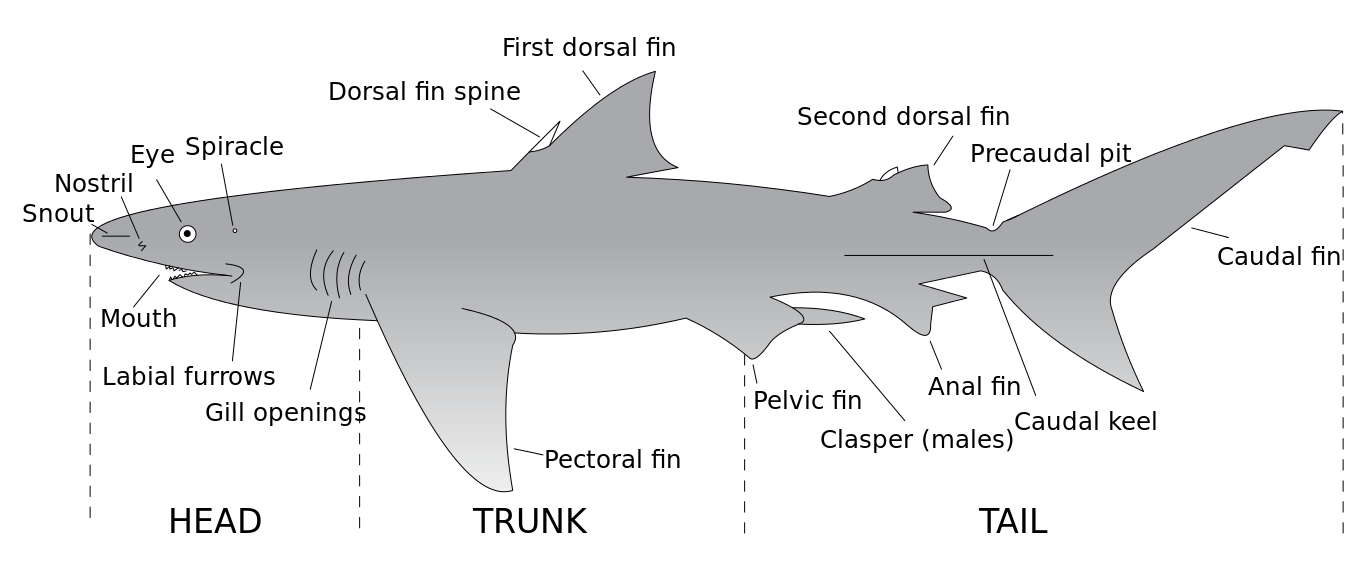
The Basics of Sharks
Sharks belong to the subclass Elasmobranchii, which includes sharks and rays. There are more than 495 known species of sharks, from the tiny dwarf lanternshark to the large whale shark. Elasmobranchs are separated from bony fishes because they have a skeleton made of cartilage rather than bone. Sharks inhabit almost every water habitat in the world, including arctic seas, tropical and temperate oceans, the deep sea and even on occasion freshwater and estuarine environments.
Shark Senses
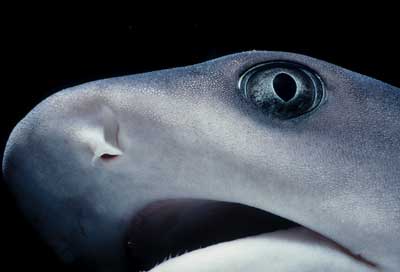
Sharks have many unique sensory systems that have allowed them to remain top ocean predators for 450 million years
Shark Eyes
A widely believed myth about sharks is that they have poor eyesight. However, it is known that sharks have eyes well adapted to living in a marine environment. They have a layer in their eyes known as the tapetum lucidum that allows them to see in murky or dark water. Some sharks have a protective eyelid, called the nictitating membrane that protects the eye when a shark bites its prey. Some sharks do not have this membrane, and instead roll their pupils back when feeding
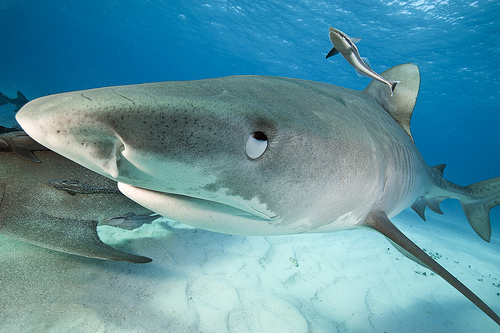
Electrical Sense
The Ampullae of Lorenzini are small pores around the head and snout that contain nerves. These nerves allow sharks to detect electrical impulses (electroreception) given off by all living things. This allows sharks to find prey in murky water or at deeper depths. Sharks can also use the ampullae as a sort of compass. They can track earth’s electromagnetic field to help them navigate during migrations and hunting.
Shark Hearing and the Lateral Line
Sharks actually have ears! Unlike humans, they lack outer ears, and simply have holes leading to the inner ear. Their ears can sense low frequences, and is aided by another specialized system, called the Lateral Line. It is used to detect vibrations and pressure changes caused by currents and animals. The lateral line is found along each side of a shark’s body and is made up of porous tubes. The lateral line aids shark in finding prey, socializing and orientation.
The Sense of Smell
Contrary to popular belief, sharks cannot smell a drop of blood in the entire ocean. They can, however, smell blood up to .4 km away. Unlike humans, sharks only use their nostrils for smell and not for respiration.
Buoyancy and Swimming
Most bony fish regulate their buoyancy through a swim bladder, an air-filled organ. Sharks lack a swim bladder, and instead control their buoyancy with an oil-filled, large liver, allowing them to ascend and descend in water. Shark fins also provide swimming functions. The caudal fin helps with forward motion, the anal fin assists with stability, the dorsal fins prevent rolling and help the shark make sharp turns, the pectoral fins help create lift, and the pelvic fin helps with turning and stopping.

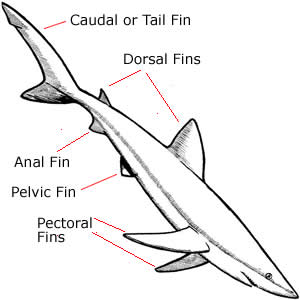
Shark Structure & Anatomy
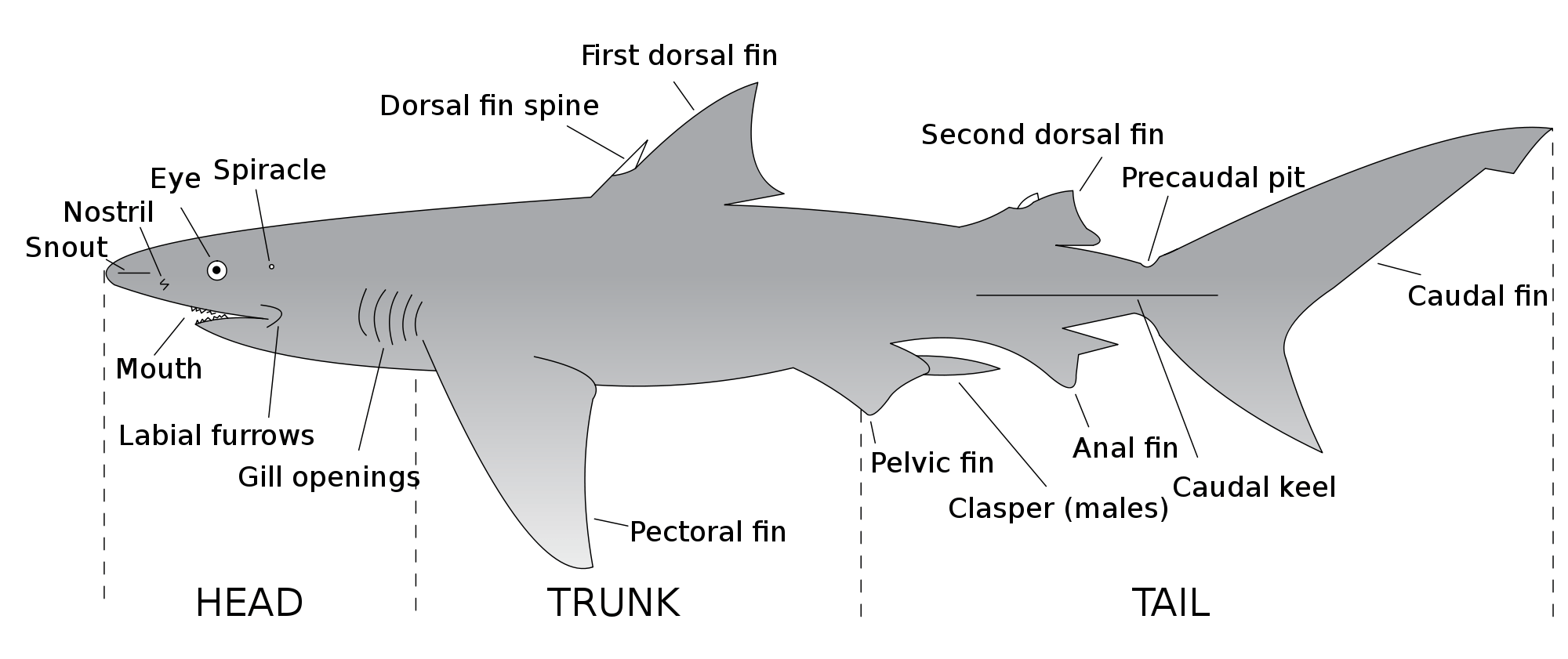
Shark Skin
Shark skin is made up of a network of fibers that work as an outer skeleton. The specialized scales of this skeleton are called dermal denticles. Their unique shape reduces turbulence when swimming, making the sharks more hydrodynamic and saving energy
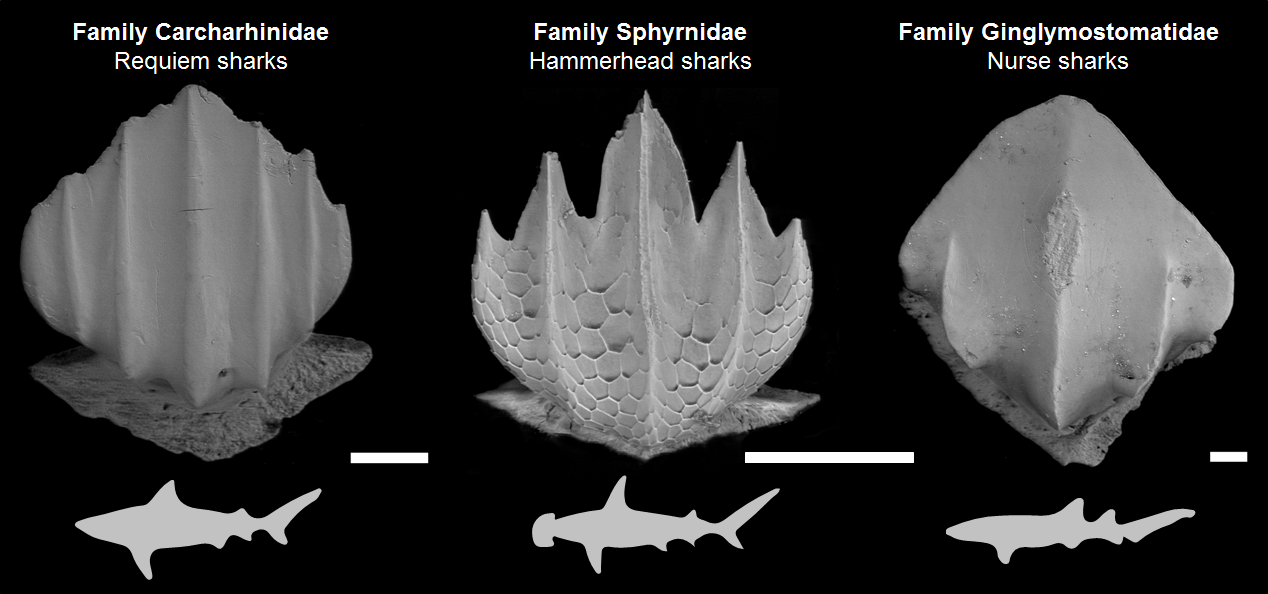
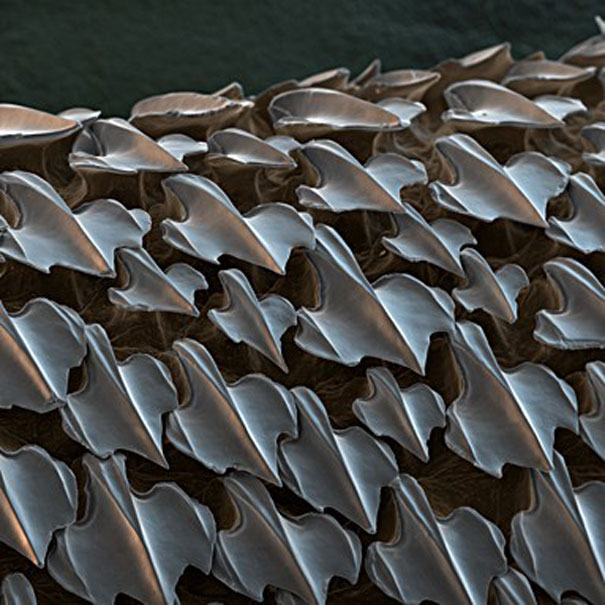
Shark Teeth
Shark teeth are attached to the gums rather than the jaw (like in humans). This means that sharks shed and replace their teeth constantly; sharks can lose tens of thousands of teeth in a lifetime. The shape of the teeth is determined by the shark’s diet; some having crushing teeth for molluscs, others have needle-like teeth for gripping fish, and large predatory sharks like the great white have serrated triangular teeth for gripping large prey.
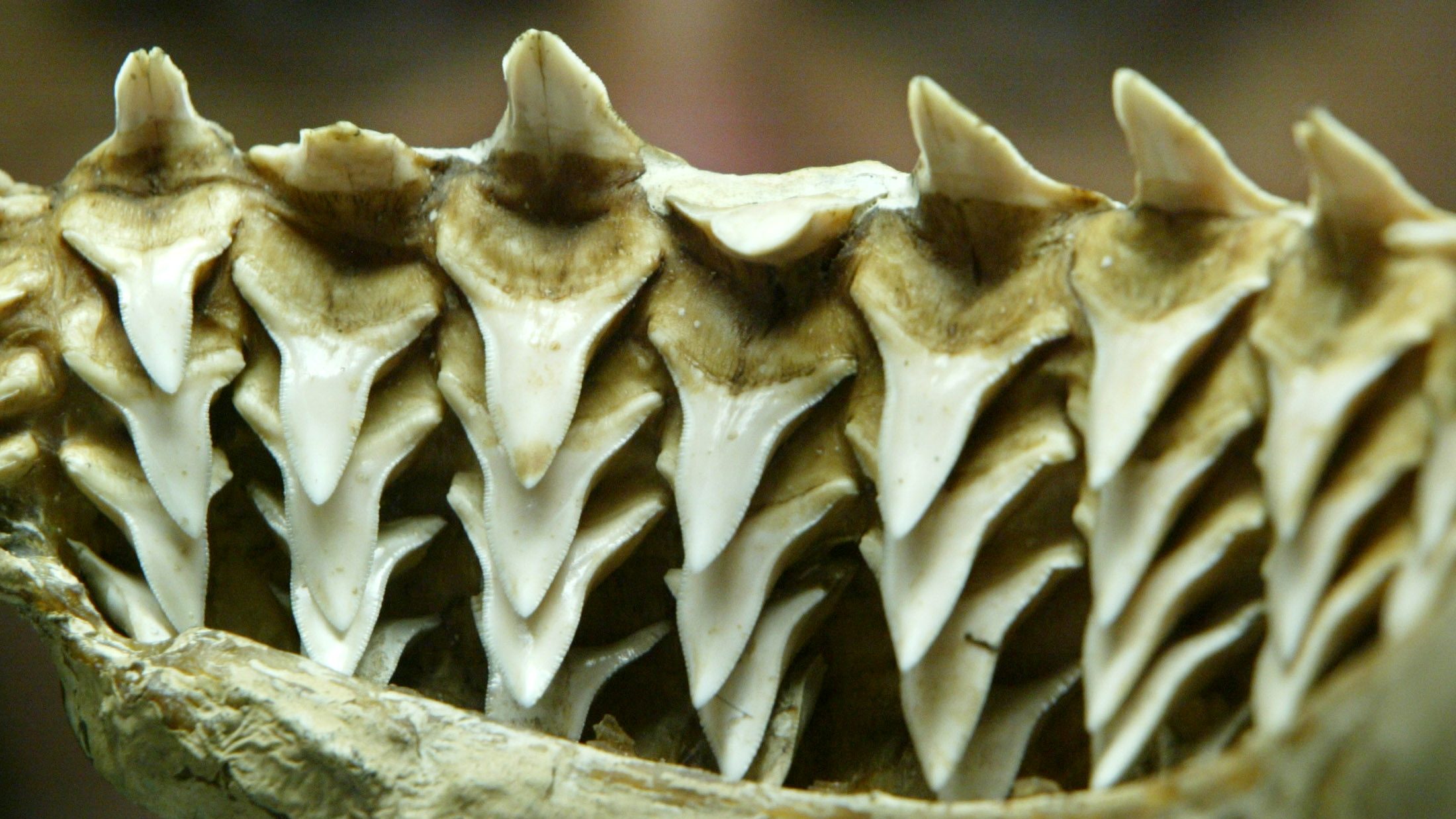
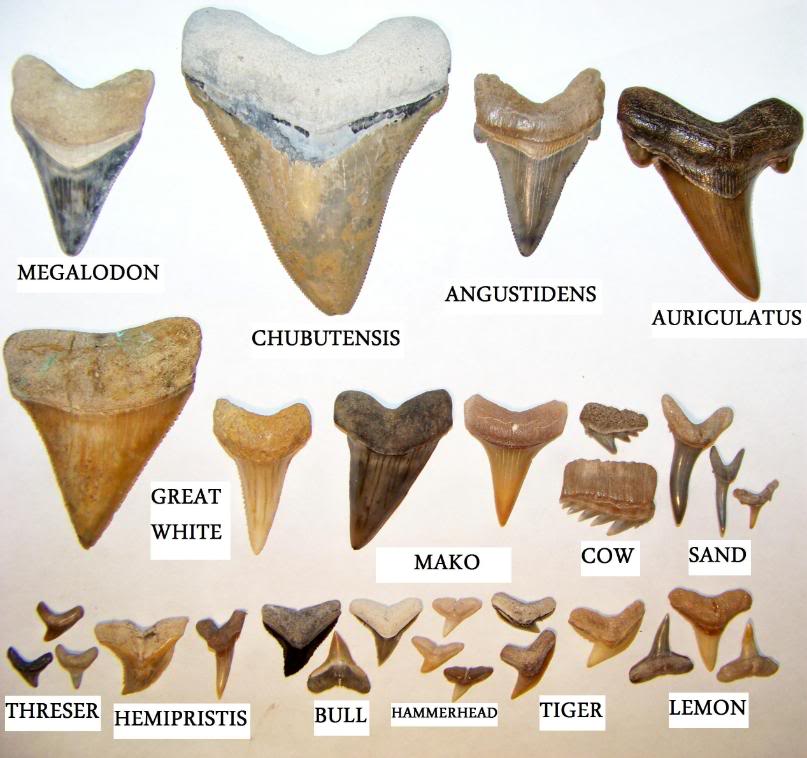
Gills & Respiration
Sharks “breathe” through a series of five to seven gill slits found on both sides of their body, and as water passes over these gills, they absorb oxygen from the water. All sharks must have water passing over their gills in order to receive oxygen. However, not all sharks have to be moving to achieve this. All sharks can use “ram ventilation”, which is the forcing of water over the gills by swimming motions. Some sharks are bottom dwellers, and have adapted to “buccal pumping”. Buccal pumping is the forcing of water over the gills by opening and closing the mouth. Some sharks that utilize buccal pumping also have a specialized opening behind the eyes, called spiracles, that aid in pumping water over the gills without taking in sand or debris.
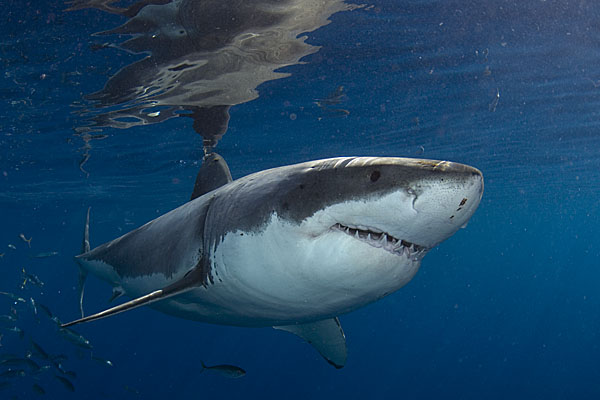
Coloration & Camouflage
Most sharks also display “counter-shading”, where the upper portion of the shark is darker to blend in with the water from above, while their undersides are lighter to camouflage them from below. This helps them stay unnoticed by predators and prey. Some sharks, such as bottom dwellers or reef residents, use patterns to aid in camouflage, which can help them capture prey and avoid predators.
Camouflage helps the sand-dwelling Wobbegong Shark capture its prey
Skeleton
